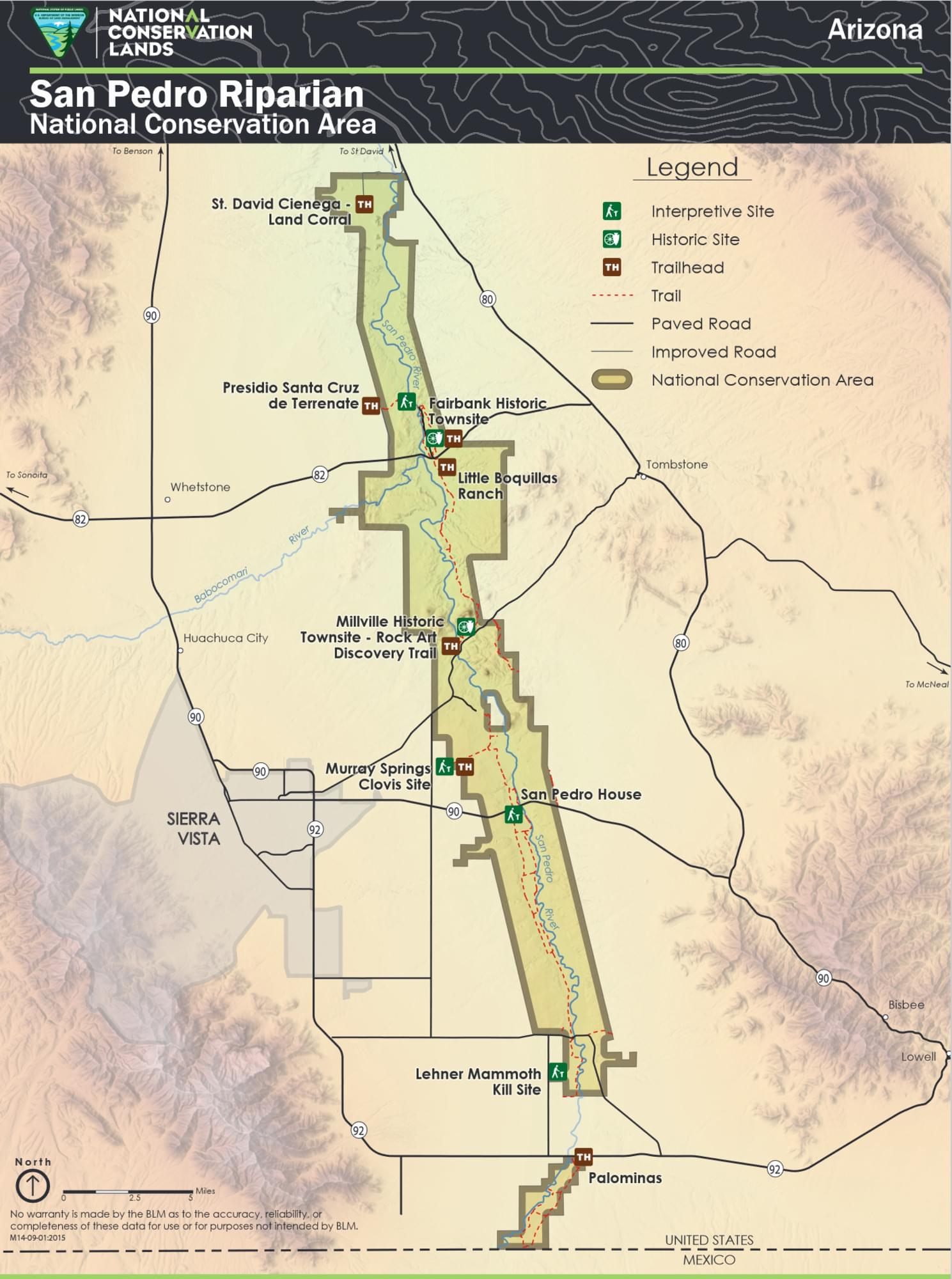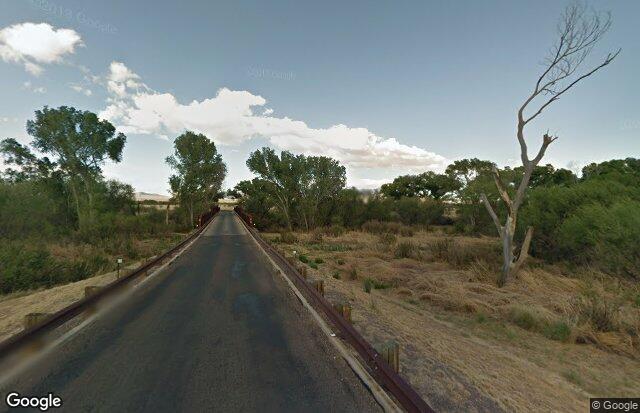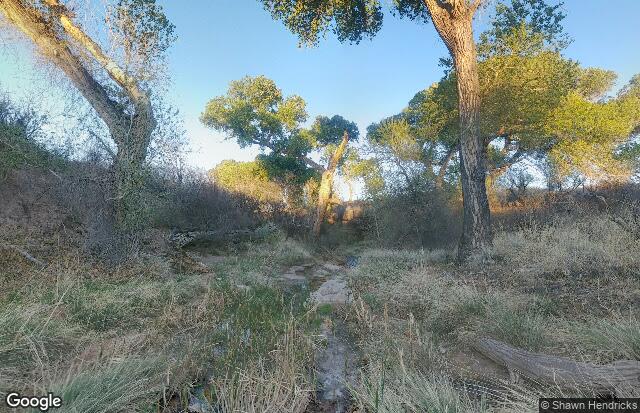
San Pedro Riparian National Conservation Area
San Pedro Riparian National Conservation Area
San Pedro Riparian National Conservation Area Sierra Vista, Arizona 85650
Official WebsiteFriends of the San Pedro website
San Pedro Riparian National Conservation Area map
Tips for Birding
The San Pedro Riparian National Conservation Area, managed by the Bureau of Land Management, may be one of birding’s best-kept secrets. Designated a Globally Important Bird Area in 1996 by the American Bird Conservancy, this 56,000-acre preserve along the upper San Pedro River is home to over 100 species of breeding birds and provides invaluable habitat for over 250 species of migrant and wintering birds. A narrow ribbon of Fremont Cottonwoods, some over 100 years old, supports forty percent of the nesting Gray Hawks in the U.S. and creates a migratory corridor for an estimated 4 million migrating birds each year.
A trip to the San Pedro River is worthwhile any time of year. Vermilion Flycatchers are hard to miss in spring and summer, sharing the lush greenery with nesting Summer Tanagers, Yellow and Lucy’s warblers, Blue Grosbeaks, and Yellow-breasted Chats. Spring and fall bring thousands of migrants, including Lazuli Bunting, Green-tailed Towhee, MacGillivray’s Warbler, and Western Tanager. Year-round residents such as Abert’s Towhee, “Lillian’s” Eastern Meadowlark, Gambel’s Quail, and the elusive Green Kingfisher and Crissal Thrasher are joined in winter by large flocks of sparrows and finches, and the raptors who hunt them.
About this Location
The San Pedro Riparian National Conservation Area contains nearly 57,000 acres of public land in Cochise County, Arizona, between the international border and St. David, Arizona. The riparian area, where some 40 miles of the upper San Pedro River meanders, was designated by Congress as a Riparian National Conservation Area on November 18, 1988. The primary purpose of the special designation is to protect and enhance the desert riparian ecosystem, a rare remnant of what was once an extensive network of similar riparian systems throughout the American Southwest. One of the most important riparian areas in the United States, the San Pedro River runs through the Chihuahuan Desert and the Sonoran Desert in southeastern Arizona. The river’s stretch is home to more than 80 species of mammals, two native species and several introduced species of fish, more than 40 species of amphibians and reptiles, and 100 species of breeding birds. It also provides an invaluable habitat for 250 species of migrant and wintering birds and contains archaeological sites representing the remains of human occupation from 13,000 years ago.
The San Pedro Riparian National Conservation Area is located 6 miles east of Sierra Vista, Arizona. From Tucson, take I-10 east 40 miles to AZ-90. Follow the highway south through Huachuca City to Fry Boulevard in Sierra Vista. Follow this street for six miles east until you reach the San Pedro House. The San Pedro Riparian National Conservation Area can also be accessed via AZ-80, near St. David; AZ-82 to Fairbank; Charleston Road to Millville Historic Townsite; Hereford Road to Hereford Bridge; and AZ-92 to Palominas.
The area provides opportunities for wildlife viewing including birdwatching, picnicking, primitive camping, pre-historic and historic site visiting, hunting, hiking, fishing, biking, horseback riding, guided hikes, interpretive site visitation, and weekend children’s programs. Parking, interpretive kiosks, and trailheads are located at Fairbank, Murry Springs, San Pedro House, Land Corral, Terrenate, Millville, and Hereford Bridge. Parking and trailheads are also available at Hereford Road, Charleston Road, Palominas, Terrenate, Escapule, and Lehner. The Friends of the San Pedro lead regularly scheduled guided walks.
The national conservation area features the intact remains of the Spanish Presidio Santa Cruz de Terrenante, a Spanish fortress marking the northern extension of New Spain into the New World. The Murray Springs Clovis Site is a significant archaeological resource that contains evidence of the earliest known people to inhabit North America. An interpretive trail leads visitors to the site. The area also features the ruins of the old mining town of Fairbank. The San Pedro House, a 1930’s-era converted ranch house, serves as a bookstore and visitor center.
Content from Southeastern Arizona Bird Observatory website and San Pedro Riparian National Conservation Area webpage
Last updated February 29, 2024





